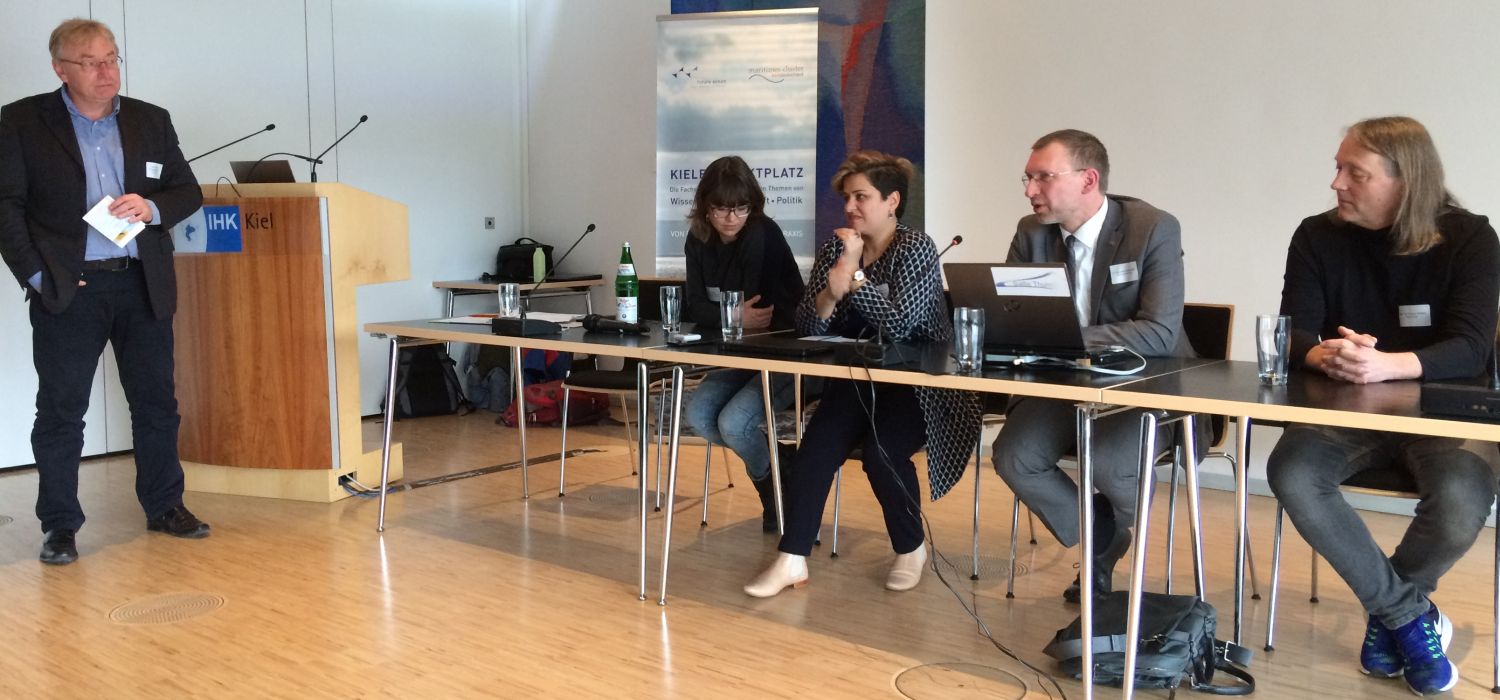100 guests followed the invitation of the Cluster "Future Ocean" and the Maritime Cluster Schleswig-Holstein and followed and discussed topics such as tire abrasion, research on jellyfish and microplastics, microplastic in the compost bin, filter technics at sewage treatment plants...
Talks
Mikroplastik in der Umwelt. Was wir wissen und was wir nicht wissen
Thea Hamm und Dr. Mark Lenz, „Ozean der Zukunft", GEOMAR, Kiel
Mikroplastik in den Weltmeeren mit Volvo Ocean Race
Stefan Marx, SubCtech GmbH, Kiel
PICOFIL – ein innovatives Filterprinzip
Prof. Dr. Jan Henrik Weychardt, Fachhochschule Kiel
Optimierte Materialien und Verfahren zur Entfernung von Mikroplastik aus dem Straßenablauf
Daniel Venghaus, M.SC. Institut für Bauingenieurwesen, Berlin
Mikroplastik aus der Biotonne
Ralph Hohenschurz-Schmidt, WAR Rendsburg-Eckernförde mbH, Borgstedt
…
